Nigeria’s First Peace Corps Staff (Part Three)
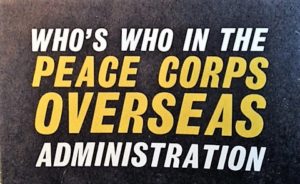 The administrative pattern for the Peace Corps in Nigeria was filled out for the first year with the arrival of Jacques Wilmore in April, 1962. Wilmore was promptly posted to Enugu as Field Officer for the Eastern Region. With no prospect in sight for the office at Kaduna in the Northern Region, this post was, in effect, assigned to Robert Baker, the contract overseas representative for UCLA, known by Volunteers as COR.
The administrative pattern for the Peace Corps in Nigeria was filled out for the first year with the arrival of Jacques Wilmore in April, 1962. Wilmore was promptly posted to Enugu as Field Officer for the Eastern Region. With no prospect in sight for the office at Kaduna in the Northern Region, this post was, in effect, assigned to Robert Baker, the contract overseas representative for UCLA, known by Volunteers as COR.
Born and raised in Philadelphia, Wilmore went to work in a men’s clothing store after graduating from high school and while waiting to turn 18 so he could join the Army. He enlisted in the Army Air Corps six months before the end of the war in 1945 and wound up a staff sergeant with an engineering battalion in the Philippines.
Discharged just before Christmas, 1946, he returned home and entered Lincoln University where, in 1950, he obtained his degree in sociology. Awarded a graduate fellowship to Haverford College, he obtained an M.A. in sociology in 1951. He joined the American Friends Service Committee in Philadelphia and worked in problems of discrimination in housing in the suburbs of Philadelphia.
In 1955, Wilmore joined the New York Urban League. The Urban League was just then commencing a campaign against housing discrimination in Westchester County. He worked in this field for five years, then became executive director of the New York State Chapter of Americans for Democratic action.
In 1962, he came to Washington to talk with friends about a job that would bring him back to the housing battle. This led him to Harris Wofford, where they were discussing race relations when out of the clear blue sky, Wofford said, “Have you ever thought about the Peace Corps?”
Later, he would speak with John Alexander who asked him, “Would you like to go to Nigeria?”
Wilmore said yes.
In July 1962, Brent Ashabranner left Nigeria in order to transfer to India as Deputy Representative, and Ray Parrott, who had moved over from Ghana in August, 1962, replaced him. A few months later, on January 1, 1963, Sam Proctor returned to Washington to take on the job of Associate Director for Volunteers, a position he would hold until September, when, with his leave expired, he would return to the presidency of North Carolina Agricultural and Technical College.
For the first time one of the top position at Peace Corps headquarters was occupied by someone with “the first point of view.”
In Lagos, Parrott was named Action Representative and charged with running the Peace Corps program in Nigeria until the August 23, 1963, arrival of Proctor’s successor, William Saltonstall, who resigned as principal of Phillips Exeter Academy in order to go to Africa for the Peace Corps. (In1796, an ancestor, Leverett Saltonstall, graduated from Exeter in the same class with Daniel Webster.)
With a 1931 master’s degree in history from Harvard, he joined the faculty at Phillips Exeter, and in 1940, he became chairman of the academy’s history department.
In World War II he served as an officer aboard the aircraft carrier U.S.S. Bunker Hills. Discharged as a lieutenant commander in 1945, he returned to Exeter and the chairmanship of the history department only to be named Principal the following summer.
A lifelong Republican, he twice served as a delegate to national GOP conventions.
The author of Ports of Piscataqua, a maritime history of New Hampshire, he was past president of the New Hampshire Historical Society, a member of the Salem Marine Society and the colonial Society of Massachusetts.
When he stepped into the office in busting, booming Lagos, Bill Saltonstall took command of the largest education program the U.S. had ever mounted in Africa. At the time of his arrival, there were 295 Volunteers in-country. 265 of them teaching in secondary schools and 30 in universities. Another 145 Volunteers were expected to arrive on September 16, 1963, with the eventual exportation that there may be as many as 600 Volunteers engaged in teaching in Nigeria.
Note: In 1986, Katharyn W. Saltonstall, William’s wife, would publish Small Bridges to One World: Perspectives of a Staff Wife, (Peter E. Randall, publisher)
The Nigeria staff in Lagos. Clockwise from Murray Frank in lower left: Dr. Lyle Conrad, research consultant Stanley Lichtenstein, Ray Parrott, Jacques Wilmore, Robert Baker, Dr. Richard Smith, Columbia University’s Africa expert Gray Cowen, Samuel Proctor.
Research Document: Who’s Who in the Peace Corps Overseas Administration (1963)
The photographs are by Rowland Scherman, Paul Conklin and Jim Walls, first photographers for the agency.
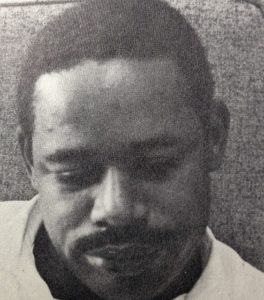
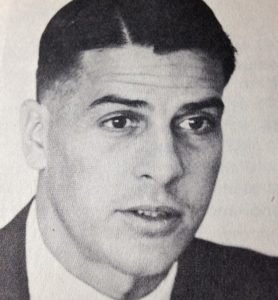
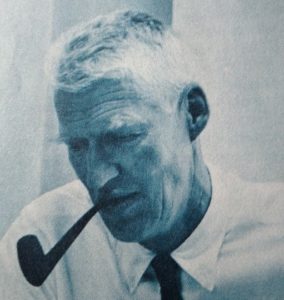
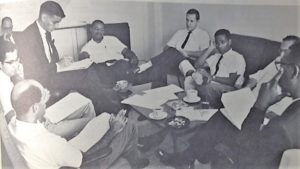
No comments yet.
Add your comment